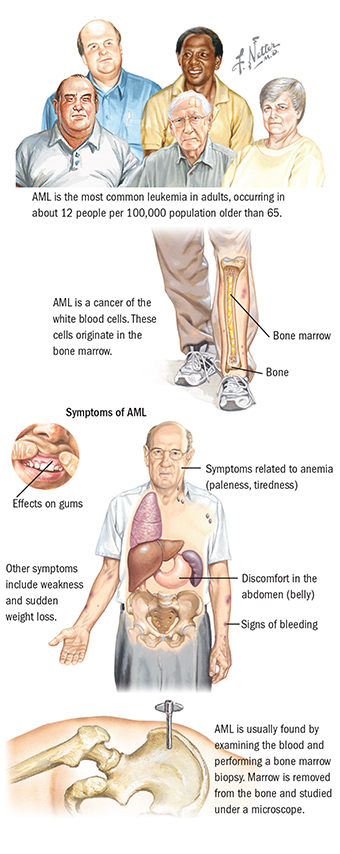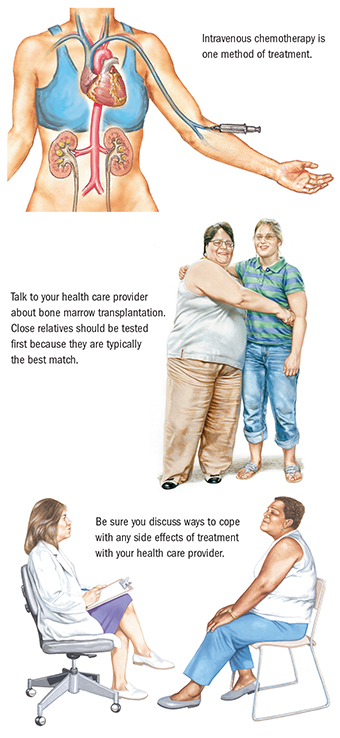
Leukemia is a cancer of the white blood cells. It originates in the bone marrow. Bone marrow is spongy tissue in the middle of bones. Blood cells form and develop in marrow and then move into the bloodstream. Leukemia can be acute and chronic. Acute leukemia affects white blood cells in bone marrow before they fully develop. Chronic leukemia affects fully grown cells. The four subcategories are acute myelogenous leukemia (AML), also known as acute myeloid leukemia, acute lymphocytic leukemia (ALL), chronic lymphocytic leukemia (CLL), and chronic myelogenous leukemia (CML). AML is most common between the ages of 30 and 60 years, and affects one type of white blood cells (these cells help fight infection).
The cause is unknown. An increased risk of developing AML occurs after exposure to high doses of radiation, the chemical benzene, and drugs used to treat cancers and in people with certain genetic disorders. No effective way to prevent AML is known.
Common symptoms include paleness, weakness, shortness of breath, weight loss, and discomfort in the belly (abdomen). Tiredness, easy bleeding, bruising, and frequent infections result from fewer red blood cells (anemia), white blood cells, and platelets. Too many young and immature (poorly developed) white cells invade lymph nodes, liver, and spleen and cause swollen glands and enlargement of these organs. Bleeding from lungs, digestive tract, and brain can occur. AML can affect skin, gums, and linings of the spinal cord and brain.
The doctor will use blood tests and perform a bone marrow biopsy. The biopsy involves removing marrow from bone and examining it under a microscope.

A cancer specialist called an oncologist manages treatment. The goal is complete remission, so that no leukemia cells remain in blood or bone marrow after treatment. First, combination chemotherapy (induction therapy) is given. If needed, additional chemotherapy is used. Chemotherapy also affects normal cells, which can lead to anemia, easy bleeding, and frequent infections.
The health care provider will examine the bone marrow after therapy. After complete remission, more chemotherapy is given to prevent leukemia’s return (consolidation therapy).
The health care provider may consider bone marrow transplantation, also called stem cell transplantation, at this point. Stem cells are the source of all blood cells. For a bone marrow transplant, healthy marrow containing stem cells is given to replace the abnormal marrow. Donors of healthy marrow are usually close relatives. Stem cells start to produce new blood cells without any leukemia cells.
Contact the following sources:
Copyright © 2016 by Saunders, an imprint of Elsevier, Inc.
Ferri’s Netter Patient Advisor